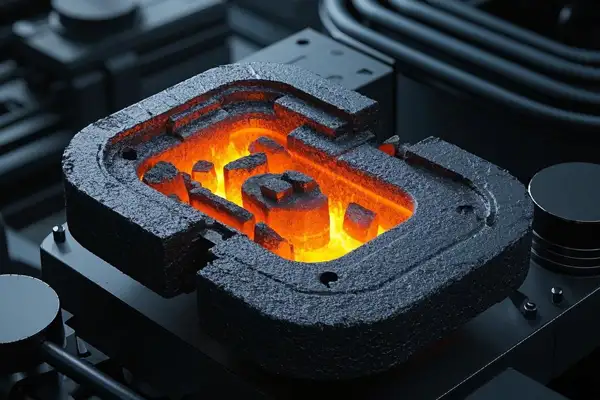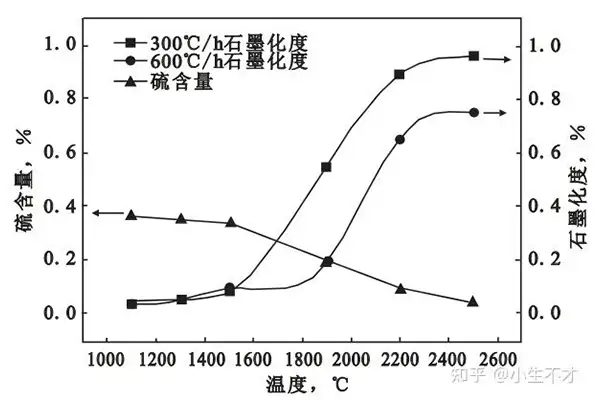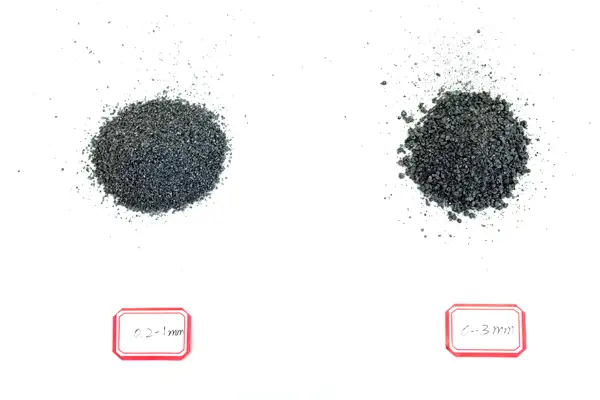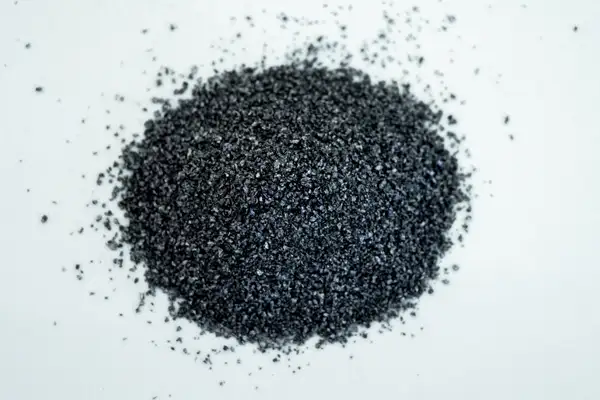Zhengzhou ChangHeYue New Material CO.,LTd
Carbon is one of the most critical alloying elements in castings, particularly in steel and iron-based components. Its content, distribution, and microstructure significantly influence the material’s physical, chemical, and mechanical properties, as well as processing characteristics and service performance. This article analyzes carbon’s role through metallurgical reactions, microstructure formation, mechanical behavior, and process optimization, supported by specific parameters.
1. Metallurgical Role of Carbon: Controller of Melting and Solidification
- Deoxidation and Reduction
- Carbon acts as a strong reducing agent in smelting, reacting with oxygen to form CO₂ or CO (e.g., ( \text{C} + \text{O}_2 \rightarrow \text{CO}_2↑ ) or ( \text{C} + \text{FeO} \rightarrow \text{CO}↑ + \text{Fe} )), reducing oxygen content in molten steel and preventing oxide inclusions.
- Key Parameters: Carbon content is typically controlled between 0.02%~0.8% (e.g., low-carbon steel ≤0.25%, high-carbon steel ≥0.6%) to ensure effective deoxidation without excessive CO gas generation, which could cause porosity.
- Alloying and Phase Transformation
- Carbon forms stable compounds with iron (e.g., Fe₃C, Fe₇C₃), directly affecting phase composition. Examples include:
- Eutectic Carbon Content: In gray cast iron, 3.8%~4.3% carbon triggers eutectic reaction at 1147°C, producing flake graphite and austenite, conferring damping and wear resistance.
- Super-saturated Carbon: In austenitic stainless steel, trace carbon (C<0.1%) via nitriding or cold treatment enhances corrosion resistance.
2. Impact of Carbon on Mechanical Properties
- Hardness and Strength Enhancement
- Carbon strengthens the matrix via carbide formation (e.g., Fe₃C). For example:
- Steel hardness increases by 20–30 MPa per 0.1% carbon addition (comparing ASTM A36 steel to 45# steel).
- High-carbon martensite steel (C>0.6%) achieves HRC 58–62 after quenching, suitable for cutting tools and molds.
- Trade-off Between Toughness and Ductility
- Excess carbon reduces toughness. For instance:
- Low-carbon steel (C<0.2%) exhibits 100 J or higher impact toughness (Charpy V-notch), while high-carbon steel (C=1.0%) drops to 10–20 J.
- Optimization Strategy: Use bainitic or dual-phase microstructures (e.g., low-carbon bainite steel, C=0.05%~0.2%) to balance strength and toughness.
3. Carbon’s Influence on Casting Processes
- Fluidity Control
- Increased carbon content lowers melt viscosity, improving flowability. For example:
- Gray cast iron with 3.5%~4.0% carbon achieves a fluidity index (LMI) of 140–160 mL/100g, facilitating complex mold filling.
- Drawback: Excessive carbon (>4.5%) may cause premature graphite precipitation, leading to cold shuts.
- Shrinkage and Porosity
- Carbon exacerbates solidification shrinkage. For example:
- Cast iron shrinks by 1.0%~1.5%, while steel shrinks 2.0%~3.0%, requiring riser design or inoculant addition (e.g., silicon/稀土 elements).
- Carbon Equivalent (CE): CE = C + 0.33(Mn) + 0.75(Si) + 0.45(P). CE > 4.0% significantly increases shrinkage porosity risk.
4. Critical Role of Carbon Morphology
- Free Graphite vs. Carbides
- Gray Cast Iron: Flake graphite (5–10 μm) provides damping but limits strength (tensile strength: 150–300 MPa).
- Ductile Iron: Spherical graphite (1–5 μm) via nodulization boosts strength to 400–800 MPa, approaching alloy steel levels.
- Carbon Distribution in Austenite/Martensite
- Carbon diffusion rate during heat treatment dictates phase transformation. For example:
- High-carbon austenite (C=1.2%) may incompletely transform to martensite, leaving residual austenite and reducing hardness.
5. Case Studies of Carbon-Optimized Castings
- Engine Cylinder Blocks (Gray Cast Iron)
- Composition: C=3.8%~4.2%, Si=1.5%~2.5%, Mn=0.5%~0.8%.
- Requirements: High thermal conductivity (~50 W/m·K) and heat resistance (≤300°C).
- Wind Turbine Gearboxes (Carburized Steel)
- Composition: C=0.18%~0.22%, Ni=1.5%~2.0%, Cr=0.8%~1.2%.
- Process: Surface carburization (carbon gradient: 0.5–1.2% surface layer), yielding HRC 58–62 hardness on the surface and toughness in the core.
6. Strategies for Carbon Content Optimization
- Precision Control
- Use post-furnace refining (e.g., LF炉, VOD) or gas blowing to achieve carbon accuracy within ±0.03%.
- Surface Treatment
- Apply carburizing/quenching to low-carbon steel or carbon plasma coating to compensate for insufficient base carbon.
- Sustainable Trends
- Low-carbon casting technologies (e.g., hydrogen reduction steelmaking) reduce CO₂ emissions by 1.8–2.5 tons/ton steel, aligning with carbon neutrality goals.
Conclusion
Carbon is a pivotal element shaping cast performance, influencing every stage from melting to service life. By optimizing carbon content, morphology, and processing techniques, manufacturers can balance strength, toughness, and processability. Future advancements in green manufacturing will further emphasize efficient carbon utilization for sustainable casting.






